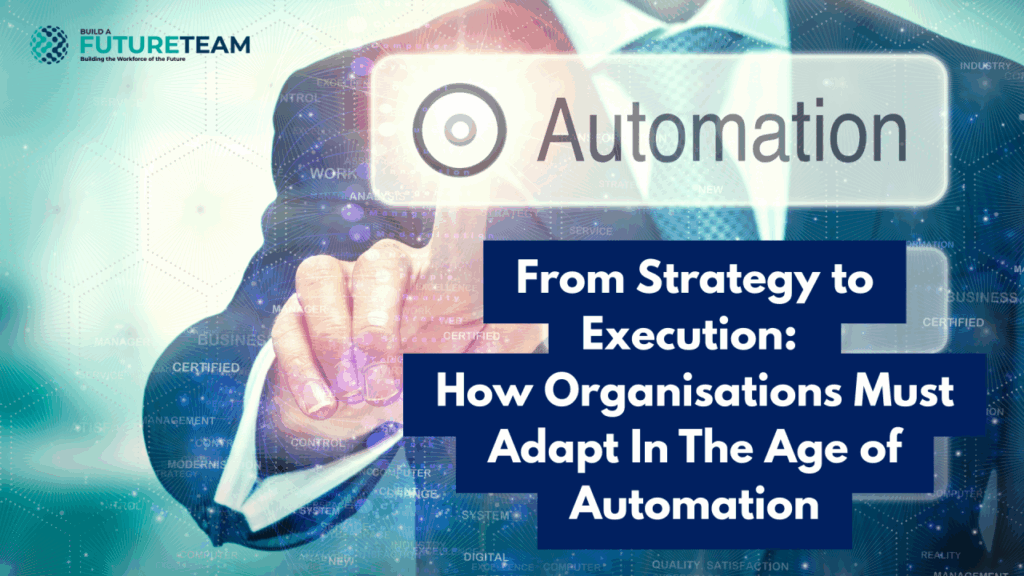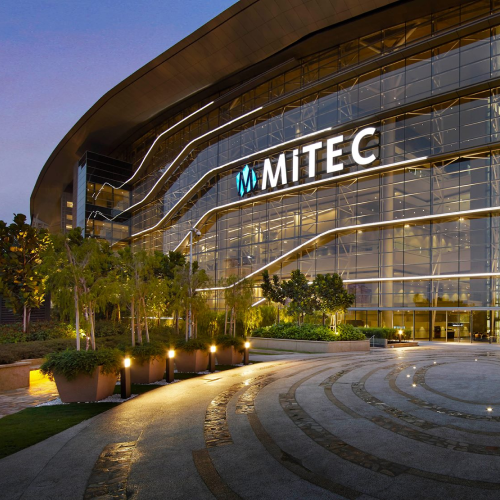
As automation and AI continue to redefine industries, organisations stand at the core of this transformation. However, many remain unprepared. While there is growing awareness of the scale of the task ahead, a crucial gap exists between awareness and action.
According to McKinsey’s 2023 report, only 16% of companies currently have a structured skills-forward strategy, underscoring the challenges organisations face in adapting to the rapid pace of technological change.
This reflects a broader trend where 83% of organisations are still operating at a basic or intermediate level in workforce analytics maturity. Bridging this gap demands more than cosmetic adjustments–-it requires a fundamental shift from transactional learning, to a systemic workforce design.

While the awareness of digital transformation is widespread, few organisations have made the transmission from passive acknowledgement to active execution. A McKinsey study reveals that 92% of companies plan to increase their AI investments over the next three years, but only 1% consider their company “mature” in AI deployment.

This discrepancy highlights the existence of a gap between ambition and reality, with many organisations struggling to search for any meaningful action. Given that generative AI could add the equivalent of $2.6 trillion to $4.4 trillion annually to the global economy, organisations that fail to implement AI effectively may miss out on critical competitive advantages.
This lack of urgency in moving from strategy to execution hampers the ability to create a workforce equipped for the future. To bridge this gap, companies must begin by mapping both current and future capabilities through predictive analytics and AI-based modelling.
This will allow organisations to anticipate evolving technologies and customer demands, equipping their workforce with necessary skills to meet those challenges. However, as only 20% of organisations are using predictive analytics extensively, there’s a clear opportunity to leverage data-driven approaches to better align workforce strategies with business needs.
To date, some leading organisations are already rising to the challenge. Companies like Amazon, AT&T, and Capgemini have institutionalised internal upskilling pipelines, offering training in areas such as cloud architecture, AI engineering, and digital product management. These organisations have not only embraced the idea of lifelong learning but also have embedded it into the fabric of their operations.
For example, L’Oréal links managerial KPIs to the learning progress of their teams, integrating skills development into the company’s performance metrics. At DBS Bank, digital competency has become a prerequisite for career advancement, illustrating the company’s commitment to future-proofing its workforce through a structured learning strategy.
This is done through offering a programme known as ‘iGrow’, which is a personalized career companion that utilises machine learning and artificial intelligence to help identify future career paths and the skills required to reach such goals. By embedding learning into the company culture and aligning it with career progression, these firms are making clear that upskilling should be made a business imperative.
Shifting Focus: From Transactional Learning to Workforce Design
However, shifting from transactional learning to a more systemic workforce design involves more than just offering isolated training programmes. It is about rethinking roles and developing skill clusters that are adaptable and capable of being augmented by automation.
This granular approach to workplace planning allows aligning training programmes with actual business transformations. Leading firms are already reconfiguring roles to ensure that employees are equipped with relevant and transferable skills that can be recombined, augmented by automation, or phased out as needed.
For instance, HSBC is forecasting that AI could reduce staff costs by 8% by 2026, a clear indicator of the firm’s commitment to reconfiguring its workforce to embrace automation. At the same time, other companies are breaking down traditional job roles into modular skill sets, ensuring that employees can be reskilled and redeployed as the demand for certain skills evolves.

In addition to offering training, organisations must create a learning culture that ties learning progress to performance and rewards. Incentive programmes have proven to increase performance by 26% when used to encourage “thinking smarter”, highlighting the importance of aligning learning and rewards to drive motivation. In companies where L&D are directly tied to performance incentives, employee retention rates improve by 30%.
At companies like L’Oréal and DBS Bank, the integration of learning tied with promotions and career progression sends an important message: continuous development is essential to success.

Moving from Strategy to Execution
The gap between strategy and execution in organisational learning and development is vast, but it is not insurmountable. By investing in structured, systematic upskilling pipelines and by integrating learning into the organisational DNA, businesses thrive by staying ahead of the curve. As more companies come to embrace predictive analytics and granular workforce design, the path from strategy to execution will become clearer.
In the end, organisations that are able to bridge this gap, transform their workforce, and adapt to the rapidly changing technological landscape will be the ones that thrive. The message is clear: action must follow awareness, or risk being left behind.
Build a Future Team aggregates a legion of business, impact, and skill partners to establish a new benchmark for social impact in the digital era across Southeast Asia. We are poised to impact 10 million lives through digital workforce transformation.

Lorem ipsum dolor sit amet, consectetur adipiscing elit. Ut elit tellus, luctus nec ullamcorper mattis, pulvinar dapibus leo.

Lorem ipsum dolor sit amet, consectetur adipiscing elit. Ut elit tellus, luctus nec ullamcorper mattis, pulvinar dapibus leo.

Lorem ipsum dolor sit amet, consectetur adipiscing elit. Ut elit tellus, luctus nec ullamcorper mattis, pulvinar dapibus leo.

Lorem ipsum dolor sit amet, consectetur adipiscing elit. Ut elit tellus, luctus nec ullamcorper mattis, pulvinar dapibus leo.

Lorem ipsum dolor sit amet, consectetur adipiscing elit. Ut elit tellus, luctus nec ullamcorper mattis, pulvinar dapibus leo.

Lorem ipsum dolor sit amet, consectetur adipiscing elit. Ut elit tellus, luctus nec ullamcorper mattis, pulvinar dapibus leo.

Lorem ipsum dolor sit amet, consectetur adipiscing elit. Ut elit tellus, luctus nec ullamcorper mattis, pulvinar dapibus leo.

Kompleks MITEC KL Metropolis,
8, Jalan Dutamas 2,
Segambut, 50480 Kuala Lumpur,
Wilayah Persekutuan Kuala Lumpur